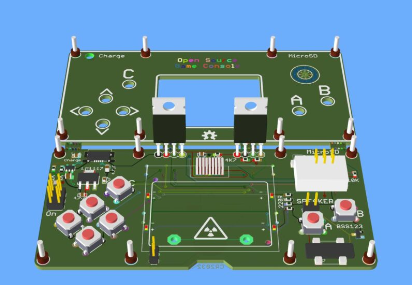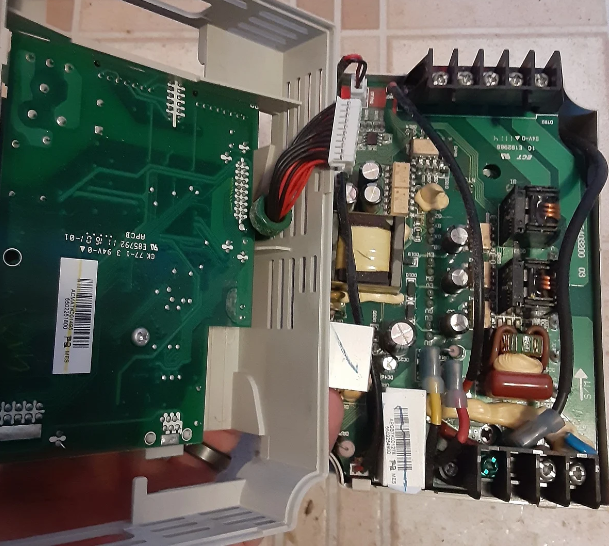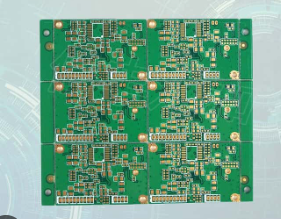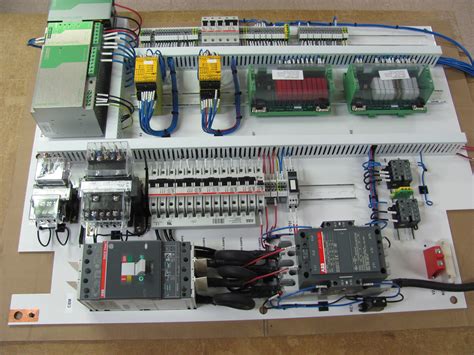Custom PCB Design for Agriculture: Revolutionizing Farming with Smart Electronics
Introduction
The agricultural sector is undergoing a remarkable technological transformation, with custom printed circuit board (PCB) design emerging as a critical enabler of precision farming and smart agriculture solutions. As the global population continues to grow—projected to reach nearly 10 billion by 2050—the pressure on agricultural systems to produce more food with fewer resources has never been greater. Custom PCB designs are answering this challenge by powering innovative agricultural technologies that optimize every aspect of farming, from soil monitoring to automated harvesting.
This article explores how tailored electronic solutions are revolutionizing agriculture through specialized PCB designs. We’ll examine the key applications, design considerations, and future trends of agricultural PCBs that are helping farmers increase yields, reduce waste, and manage resources more efficiently in an increasingly connected farming ecosystem.
The Growing Role of Electronics in Modern Agriculture
Agriculture has evolved from purely mechanical processes to sophisticated systems integrating electronics, sensors, and data analytics. This digital transformation is made possible by custom PCBs designed specifically for the demanding conditions of agricultural environments.
Several factors are driving the adoption of electronic solutions in farming:
- Precision agriculture demands: Need for exact measurements and controlled operations
- Labor shortages: Automation compensates for reduced availability of farm workers
- Resource optimization: Efficient use of water, fertilizers, and pesticides
- Climate challenges: Adaptation to changing weather patterns and extreme conditions
- Data-driven decisions: Real-time monitoring and analytics for improved yields
Custom PCBs serve as the foundation for these advanced agricultural technologies, enabling functionality that off-the-shelf electronics cannot provide due to the unique requirements of farming applications.
Key Applications of Custom PCBs in Agriculture
1. Soil Monitoring Systems
Advanced soil sensors powered by custom PCBs provide real-time data on:
- Moisture levels (capacitive or resistive sensing designs)
- Nutrient content (electrochemical sensor interfaces)
- Temperature (precision thermistor circuits)
- pH balance (ion-selective electrode conditioning)
These systems often employ low-power designs with:
- Energy harvesting capabilities (solar, microbial fuel cells)
- Wireless communication modules (LoRa, Zigbee, cellular)
- Robust encapsulation against moisture and corrosion
Design challenges include:
- Dealing with varying soil conductivity
- Preventing corrosion of exposed contacts
- Maintaining calibration over extended periods
- Power management for remote deployments
2. Automated Irrigation Control
Smart irrigation controllers use custom PCBs to:
- Process data from multiple soil moisture sensors
- Control solenoid valves with appropriate drive circuits
- Interface with weather forecast APIs
- Implement water flow monitoring (Hall-effect sensor interfaces)
Critical design aspects:
- High-current drivers for valve control
- Waterproof enclosures and conformal coatings
- Fail-safe mechanisms to prevent over/under-watering
- Power considerations for field deployment
3. Livestock Monitoring
Electronic tracking and health monitoring systems utilize:
- RFID tags and readers (LF/HF/UHF frequency designs)
- Biometric sensors (temperature, activity, rumination)
- Geolocation (GPS or indoor positioning systems)
- Wireless body area networks for data aggregation
Design requirements:
- Ultra-low power consumption for animal-worn devices
- Robust mechanical design for harsh environments
- Antenna optimization for animal-mounted applications
- Secure data transmission for large-scale deployments
4. Precision Spraying Systems
Targeted pesticide and fertilizer application relies on:
- Machine vision processing (high-speed image sensor interfaces)
- Nozzle control circuits (PWM-driven solenoid arrays)
- Real-time decision making (embedded processing)
- Vehicle integration (CAN bus or other automotive protocols)
Technical considerations:
- High-speed signal processing requirements
- Synchronization with vehicle movement
- Chemical resistance of exposed components
- Safety interlocks and fault detection
5. Greenhouse Automation
Modern greenhouse controls manage:
- Environmental sensors (multi-parameter clusters)
- Actuators for vents, shades, and irrigation
- Artificial lighting control (LED driver designs)
- CO₂ supplementation systems
PCB design focuses on:
- Distributed sensor networks
- Reliable actuator interfaces
- Light spectrum-specific LED drivers
- Integration with climate control algorithms
6. Agricultural Drones
UAVs for farming applications require:
- Flight control systems tailored to agricultural payloads
- Multispectral camera interfaces
- Spraying system controls
- Long-range telemetry links
Specialized design elements:
- Vibration-resistant mounting
- EMI mitigation for sensitive sensors
- Weight-optimized layouts
- Redundant systems for reliability

Design Considerations for Agricultural PCBs
Creating effective PCBs for agricultural applications presents unique challenges that demand specialized design approaches:
Environmental Factors
- Harsh Conditions Protection:
- IP-rated enclosures and conformal coatings
- Corrosion-resistant materials and finishes
- UV-stable components and housings
- Wide temperature range operation (-20°C to +70°C typical)
- Contamination Resistance:
- Sealed connectors and openings
- Self-cleaning designs where possible
- Chemical-resistant soldermasks and coatings
Power Management
- Energy Harvesting:
- Solar power conditioning circuits
- Vibration energy harvesting for moving equipment
- Thermal gradients in livestock applications
- Low-Power Design:
- Sleep modes and wake-up strategies
- Efficient DC-DC conversion
- Power gating for sensor subsystems
Connectivity Solutions
- Wireless Technologies:
- Sub-GHz for long range in rural areas
- Mesh networking for field coverage
- Satellite connectivity for remote locations
- Wired Alternatives:
- Power-line communication for fixed installations
- Robust cabling for vehicle-mounted systems
Reliability Requirements
- Long-Term Operation:
- Component derating for extended lifespan
- Maintenance-free designs for inaccessible locations
- Self-diagnostic capabilities
- Fault Tolerance:
- Redundant critical paths
- Graceful degradation features
- Fail-safe modes for actuators

Regulatory Compliance
- Agricultural Standards:
- EMI/EMC considerations for rural environments
- Safety standards for high-voltage farm equipment
- Wireless spectrum allocations for agricultural use
- Environmental Regulations:
- RoHS compliance
- Proper disposal considerations
- Restrictions on certain materials
Emerging Trends in Agricultural PCB Design
The future of custom PCBs in agriculture is being shaped by several technological advancements:
1. AI at the Edge
Integration of machine learning capabilities directly into agricultural devices through:
- Neural network accelerators in microcontroller selection
- TinyML implementations for low-power devices
- On-device data processing to reduce cloud dependence
2. Advanced Sensing Technologies
New sensor modalities requiring specialized interface circuits:
- Hyperspectral imaging for plant health assessment
- Electronic noses for disease detection
- Radar-based soil analysis
- Quantum dot sensors for precise nutrient measurement
3. Robotics and Automation
PCBs enabling more sophisticated agricultural robots:
- High-power motor drivers for autonomous tractors
- Real-time kinematic (RTK) GPS interfaces
- Force feedback for delicate harvesting operations
- Swarm coordination for multiple robot systems
4. Blockchain for Food Traceability
Secure hardware implementations for:
- Tamper-proof data logging
- Cryptographic operations for supply chain tracking
- Secure element integration for authentication
5. Vertical Farming Electronics
Specialized designs for controlled environment agriculture:
- LED lighting drivers with dynamic spectra
- Aeroponic misting control systems
- Stacked growth environment monitoring

Case Studies: Successful Agricultural PCB Implementations
1. Smart Orchard Management System
A custom PCB solution integrating:
- Fruit maturity sensors (optical and pressure-sensitive)
- Microclimate monitoring stations
- Automated thinning and harvesting controls
- Wireless mesh network for data collection
Results: 30% reduction in labor costs, 15% increase in yield quality
2. Connected Beehive Monitoring
Electronic hive assessment system featuring:
- Weight measurement load cells
- Internal temperature/humidity sensing
- Audio analysis for swarm prediction
- Solar-powered LoRa communication
Outcome: 40% reduction in colony collapse incidents
3. Autonomous Weeding Robot
PCB designs enabling:
- Real-time plant classification (CNN accelerator)
- Precision mechanical weed removal
- All-electric drive system
- Field mapping and path planning
Benefits: 90% reduction in herbicide use, 24/7 operation capability
The PCB Design Process for Agricultural Applications
Developing effective agricultural electronics follows a specialized workflow:
- Requirements Analysis:
- Environmental operating conditions
- Sensor/actuator specifications
- Power and connectivity constraints
- Regulatory and safety considerations
- Architecture Definition:
- Component selection for harsh environments
- Power architecture and backup strategies
- Data processing and communication approach
- Schematic Design:
- Robust circuit topologies
- Protection circuitry
- Testability features
- PCB Layout:
- Environmental protection considerations
- EMI/EMC optimization
- Mechanical constraints
- Prototyping and Testing:
- Environmental stress testing
- Long-term reliability trials
- Field validation under actual conditions
- Manufacturing and Deployment:
- Conformal coating processes
- Quality control for field reliability
- Deployment and maintenance planning
Conclusion: Cultivating the Future of Agriculture Through Custom Electronics
Custom PCB design stands at the forefront of agriculture’s technological revolution, enabling smarter, more efficient, and more sustainable farming practices. As the challenges facing global food production intensify, the role of tailored electronic solutions will only grow in importance.
The unique demands of agricultural environments—from dusty fields to humid greenhouses, from vibrating machinery to remote monitoring locations—require electronics that go beyond commercial-grade designs. Custom PCBs address these challenges through specialized materials, robust architectures, and innovative features that bring reliability and intelligence to every aspect of modern farming.
Looking ahead, the convergence of advanced technologies like AI, IoT, and robotics with agricultural practice will continue to drive innovation in PCB design. Engineers developing solutions for this sector must balance technical requirements with practical realities of farm operations, always keeping in mind the end goal: helping growers produce more with less while protecting our natural resources.
For agricultural equipment manufacturers, technology providers, and farming operations alike, investment in custom PCB solutions represents a strategic opportunity to gain competitive advantage in an increasingly technology-driven industry. The seeds of this agricultural revolution are being planted today in the form of sophisticated electronic designs that will power the farms of tomorrow.






